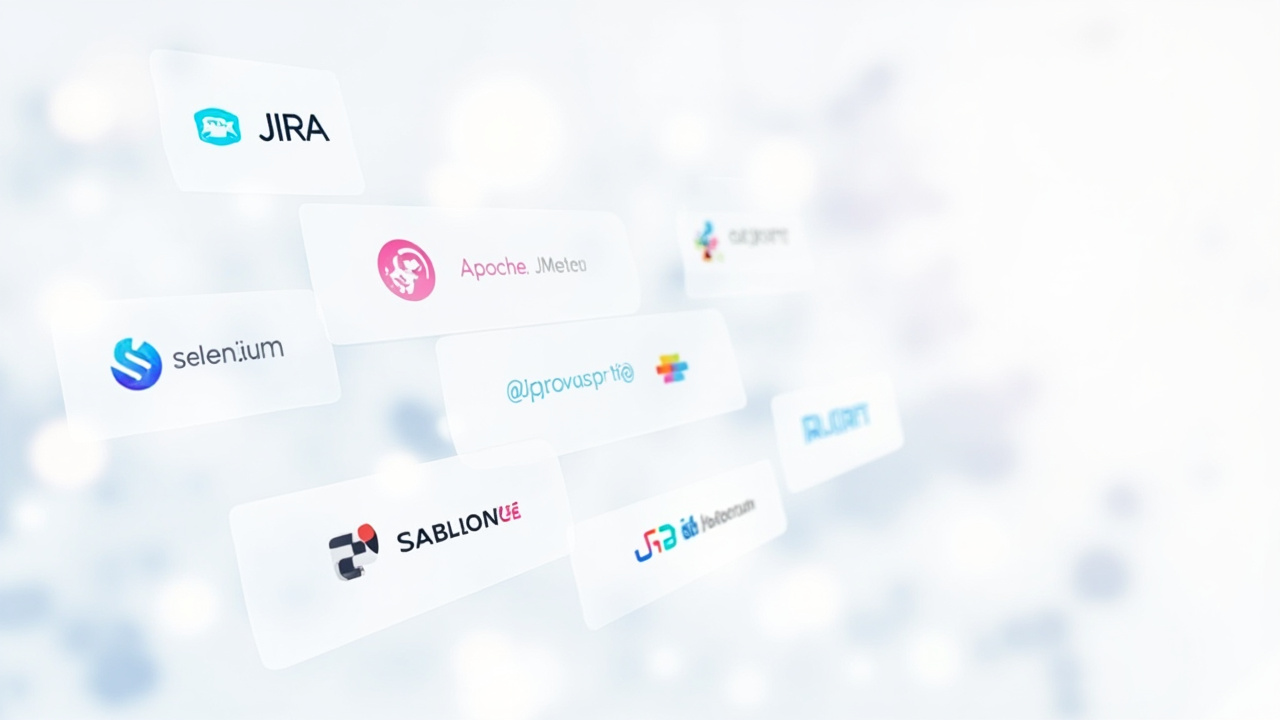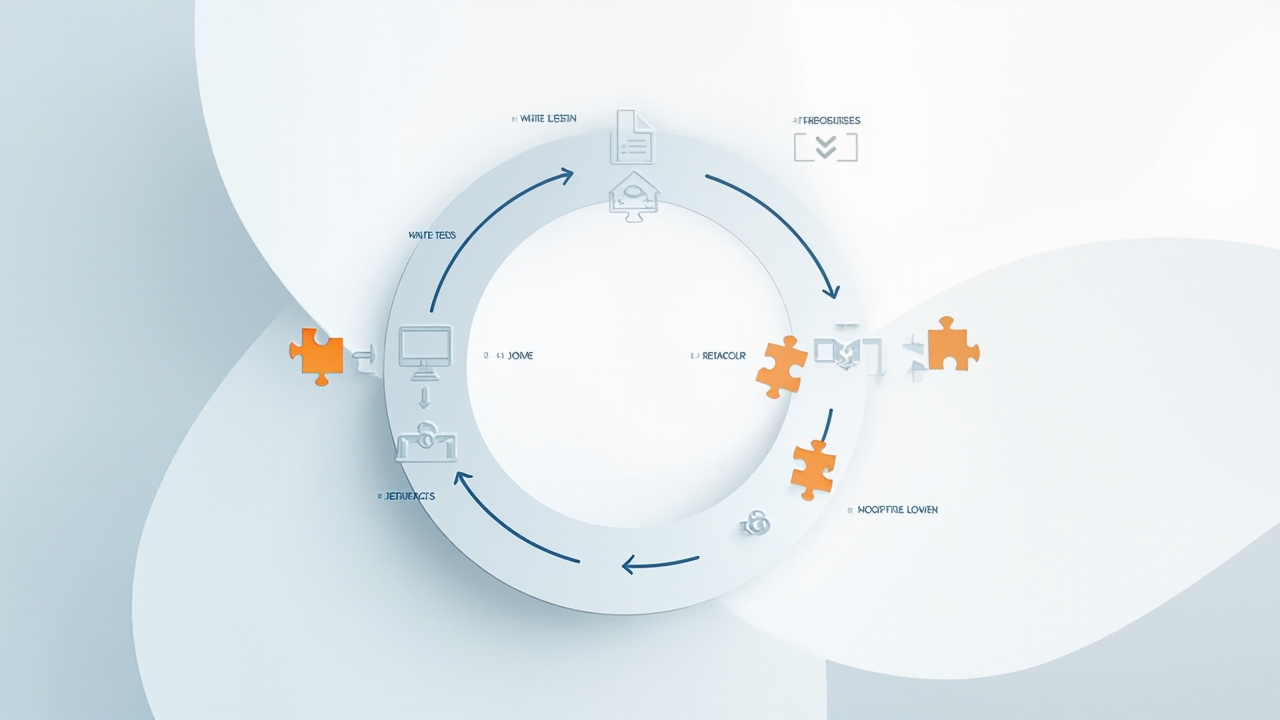In today’s fast-paced digital world, the demand for robust, reliable software is higher than ever. As developers race against the clock to deliver innovative solutions, the role of software testing becomes indispensable. Whether you’re a seasoned developer or new to the world of software engineering, understanding the nuances of software testing can be a game-changer in your career. This comprehensive guide will walk you through the essentials of software testing, exploring its various facets and the importance of integrating a solid testing strategy into your software development lifecycle.
Software testing is not just a phase in the development cycle; it’s an ongoing process that ensures the software product meets the highest standards of quality. It involves scrutinizing every line of code, identifying potential bugs, and ensuring that the software performs flawlessly under all conditions. But why is software testing so critical? The answer lies in its ability to save time, resources, and ultimately, your reputation. In a market where users have endless options, a single flaw can lead to lost customers and tarnished brand image.
Through this guide, we will delve into different testing methodologies, explore the tools that can enhance testing efficiency, and discuss best practices that every software tester should know. By the end of this article, you will have a comprehensive understanding of software testing essentials and be equipped with actionable insights to improve your testing strategies. Ready to elevate your software development process? Let’s dive in.
Understanding the Basics of Software Testing

Every successful software testing strategy begins with a solid understanding of its foundational principles. Software testing is a process of evaluating and verifying that a software application or program performs as expected. The primary goal is to identify bugs or defects before the software is deployed.
The Importance of Testing in the Software Development Lifecycle
Software testing is an integral part of the Software Development Lifecycle (SDLC). It ensures that each phase of development produces the desired output and adheres to the specified requirements. Testing isn’t just about finding bugs; it’s about validating that the software functions as intended.
“Testing isn’t just about finding bugs; it’s about validating that the software functions as intended.”
Moreover, thorough testing can prevent costly post-release fixes and enhance user satisfaction. By incorporating testing early in the development process, teams can identify and fix issues before they escalate.
Types of Software Testing
Software testing can be broadly categorized into two types: manual testing and automated testing. While manual testing involves human intervention to execute test cases, automated testing uses scripts and tools to perform tests.
- Manual Testing: This involves the manual execution of test cases without the use of automation tools. It’s useful for exploratory, usability, and ad-hoc testing. Automated Testing: Automated tools are used to execute pre-scripted tests on the software. It’s ideal for regression, load, and performance testing.
The Testing Pyramid
The testing pyramid is a framework that suggests a distribution of test types. It emphasizes the importance of having more unit tests at the base, a moderate number of integration tests in the middle, and fewer end-to-end tests at the top. This approach helps in maintaining a balanced testing strategy that is efficient and cost-effective.
“A balanced testing strategy is efficient and cost-effective, focusing on more unit tests and fewer end-to-end tests.”
Understanding these basics sets the stage for exploring more advanced testing techniques and methodologies. In the next section, we’ll dive deeper into various testing methodologies that can be employed to ensure robust software quality.
Exploring Software Testing Methodologies

In the realm of software testing, methodologies play a crucial role in defining how testing is conducted. Different methodologies offer different advantages, and choosing the right one can significantly impact the effectiveness of your testing efforts.
Agile Testing
Agile methodology has transformed the way software is developed and tested. Agile testing is a practice that aligns with the principles of agile software development, emphasizing collaboration, flexibility, and customer feedback.
- Continuous Testing: Agile testing involves continuous testing throughout the development process, allowing teams to identify issues early. User-Centric: Agile testing focuses on delivering a product that meets user expectations, incorporating feedback at every stage. Collaboration: It promotes collaboration between testers, developers, and stakeholders to ensure quality.
Waterfall Testing
The Waterfall model is a traditional approach to software development and testing. It follows a linear progression, where each phase must be completed before moving on to the next.
- Structured Approach: Waterfall testing is structured and follows a set sequence, making it easy to manage. Requirement Clarity: It is best suited for projects with clear and unchanging requirements. Documentation: Comprehensive documentation is a hallmark of Waterfall testing, providing a clear reference for each phase.
DevOps and Continuous Integration/Continuous Deployment (CI/CD)
DevOps culture has integrated testing into the CI/CD pipeline, ensuring that code changes are automatically tested and deployed.
- Automation: CI/CD relies heavily on automated testing to ensure quick feedback and release cycles. Integration: Tests are integrated into the deployment process, catching issues before they reach production. Efficiency: By automating repetitive tasks, DevOps enhances testing efficiency and reduces human error.
“DevOps integrates testing into the CI/CD pipeline, enhancing efficiency and reducing errors through automation.”
Choosing the right testing methodology depends on the project’s requirements, team dynamics, and technological constraints. In the next section, we’ll explore the vast array of tools available to streamline your testing process.
Essential Tools for Effective Software Testing

In the world of software development, tools are as important as the skills of the developers themselves. The right tools can drastically improve the efficiency and effectiveness of your testing efforts.
Test Automation Tools
Automated testing tools are essential for executing repetitive tests and ensuring consistent results. Some popular automation tools include
- Selenium: An open-source tool for automating web applications. JUnit: A widely used framework for unit testing in Java. TestComplete: A comprehensive tool for functional UI testing.
Performance Testing Tools
Performance testing ensures that your application can handle the expected load and perform optimally under stress. Key tools include
- Apache JMeter: An open-source tool for performance and load testing. LoadRunner: A powerful tool for testing the performance of applications under load. Gatling: A tool focused on load testing with a focus on ease of use and scalability.
Bug Tracking Tools
Tracking and managing bugs is a critical aspect of software testing. Bug tracking tools help teams keep track of issues and their resolution.
- JIRA: A popular tool for bug tracking and project management. Bugzilla: An open-source bug tracking system. MantisBT: A web-based bug tracking system with a simple interface.
“The right tools can drastically improve the efficiency and effectiveness of your testing efforts.”
Choosing the right tools requires an understanding of your project’s specific needs and constraints. In the next section, we’ll discuss best practices to enhance your testing strategy.
Best Practices for Software Testing

Even with the best tools and methodologies, adhering to best practices is crucial for a successful software testing strategy. These practices ensure that your testing efforts are organized, efficient, and yield reliable results.
Develop a Comprehensive Test Plan
A test plan outlines the testing strategy, objectives, resources, schedule, and scope of testing activities.
- Define Objectives: Clearly state what you aim to achieve with your testing efforts. Allocate Resources: Identify the resources required, including tools, time, and personnel. Set Milestones: Establish key milestones to track progress and ensure timely delivery.
Prioritize Test Cases
Not all test cases are created equal. Prioritizing test cases helps in focusing on the most critical aspects of the application.
- Risk-Based Testing: Prioritize tests based on the risk of failure and impact on the user. Functional vs. Non-Functional: Balance between testing functional requirements and non-functional aspects like performance and security.
Foster a Culture of Quality
Quality should be a shared responsibility across the organization, not just the testing team.
- Cross-Functional Collaboration: Encourage collaboration between developers, testers, and stakeholders. Continuous Learning: Stay updated with the latest testing trends and technologies.
“Quality should be a shared responsibility across the organization, not just the testing team.”
Implementing these best practices can significantly enhance the effectiveness of your testing strategy. In the next section, we’ll explore advanced testing techniques that can take your testing efforts to the next level.
Advanced Testing Techniques

As software systems become more complex, advanced testing techniques are necessary to ensure comprehensive coverage and reliability.
Exploratory Testing
Exploratory testing is an informal testing approach where testers actively explore the application, often without predefined test cases.
- Creativity and Exploration: Testers use their creativity and knowledge to uncover hidden issues. Real-Time Learning: Testers learn about the application as they test, adapting their approach dynamically.
Mutation Testing
Mutation testing is a technique used to evaluate the effectiveness of test cases by introducing small changes (mutations) into the code.
- Test Case Robustness: Helps identify weak test cases that do not catch the introduced mutations. Code Quality: Encourages writing more robust and comprehensive tests.
Test-Driven Development (TDD)
TDD is a development approach where tests are written before the code itself.
- Code Quality Improvement: Encourages writing clean, minimal, and testable code. Regression Prevention: Ensures that changes do not break existing functionality.
“Test-Driven Development ensures that changes do not break existing functionality, promoting a robust development process.”
These advanced techniques can enhance your testing strategy, ensuring that your software is reliable and robust. In the following section, we’ll discuss the future of software testing and emerging trends to watch out for.
The Future of Software Testing: Trends and Innovations

The field of software testing is constantly evolving, driven by technological advancements and changing user demands. Staying ahead of these trends is crucial for maintaining a competitive edge.
Artificial Intelligence and Machine Learning in Testing
AI and ML are transforming the way testing is conducted, offering smarter and more efficient testing solutions.
- Predictive Analytics: AI can predict potential issues and recommend test cases. Test Automation: ML algorithms can automate test case generation and execution.
Shift-Left Testing
Shift-left testing advocates for testing early in the development process, catching issues before they become costly.
- Early Detection: Identifies defects early, reducing the cost and effort of fixing them. Continuous Feedback: Provides continuous feedback to developers, improving code quality.
Cloud-Based Testing
Cloud-based testing offers scalability, flexibility, and cost-effectiveness.
- Scalability: Easily scale testing efforts based on demand. Access and Collaboration: Provides easy access and collaboration across distributed teams.
“AI and ML are transforming testing, offering smarter and more efficient solutions through predictive analytics and automation.”
Embracing these trends will ensure that your testing processes remain relevant and effective. As we conclude this guide, let’s recap the key takeaways and explore how you can continue your journey in software testing.
Conclusion: Elevating Your Software Testing Strategy

Software testing is an indispensable component of the software development process. It ensures that the final product is reliable, efficient, and meets user expectations. By understanding the basics, exploring different methodologies, leveraging the right tools, and adopting best practices, you can significantly enhance your testing efforts.
As we look to the future, embracing emerging trends like AI, shift-left testing, and cloud-based solutions will be crucial for staying ahead in the competitive software landscape. Remember, quality is not just the responsibility of testers; it’s a shared commitment across the organization.
In your journey to mastering software testing, continue to explore, learn, and adapt. The world of software testing is vast and ever-changing, offering endless opportunities for growth and innovation.
“Quality is not just the responsibility of testers; it’s a shared commitment across the organization.”
Ready to take your software testing skills to the next level? Dive deeper into each of these areas and embrace the continuous learning that this dynamic field offers.
Explore More on This Topic
Interested in diving deeper into this subject? Connect with experts or explore additional resources to expand your understanding.
If the link above does not work, please visit: https://calendly.com/dm-csimplifyit/30min?month=2025-05